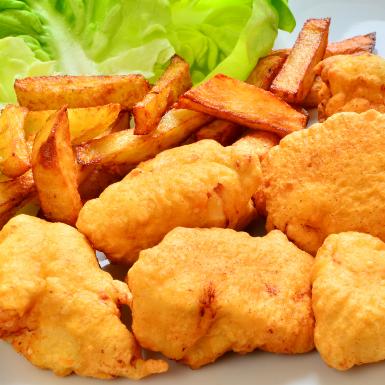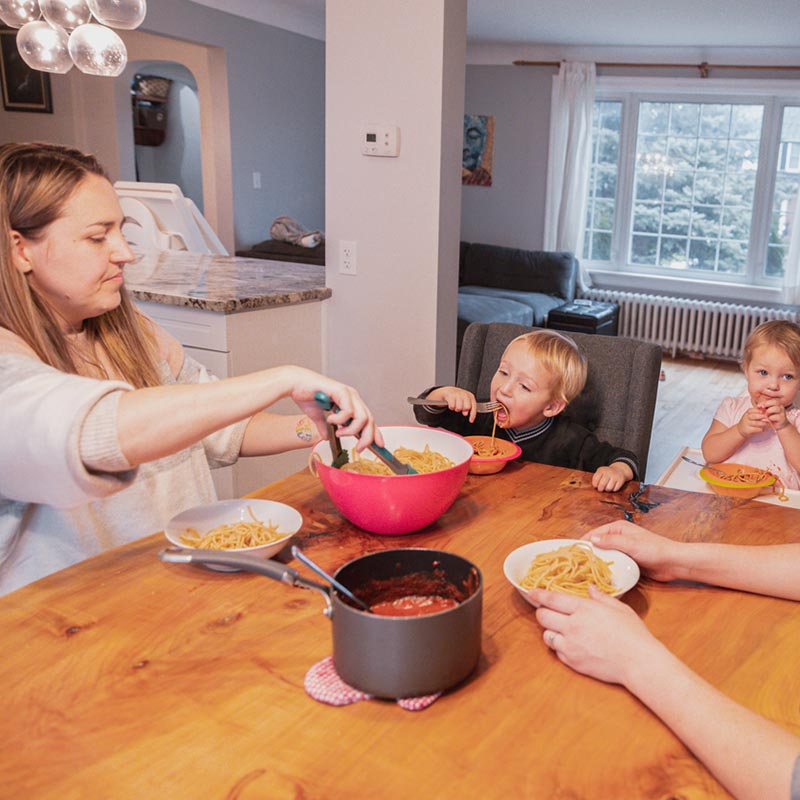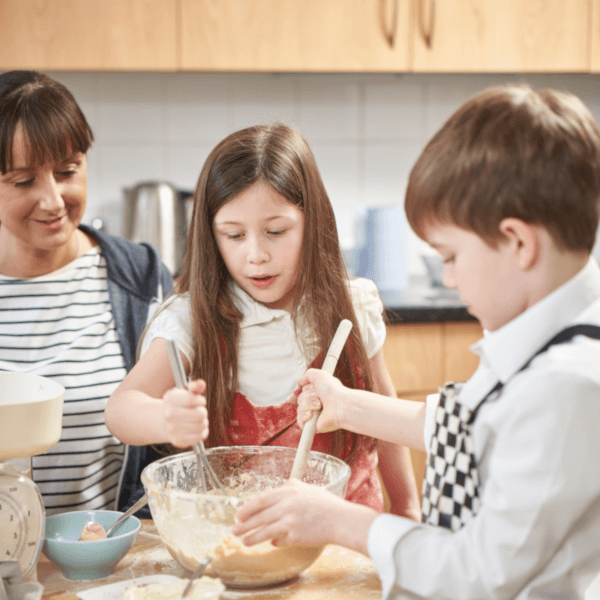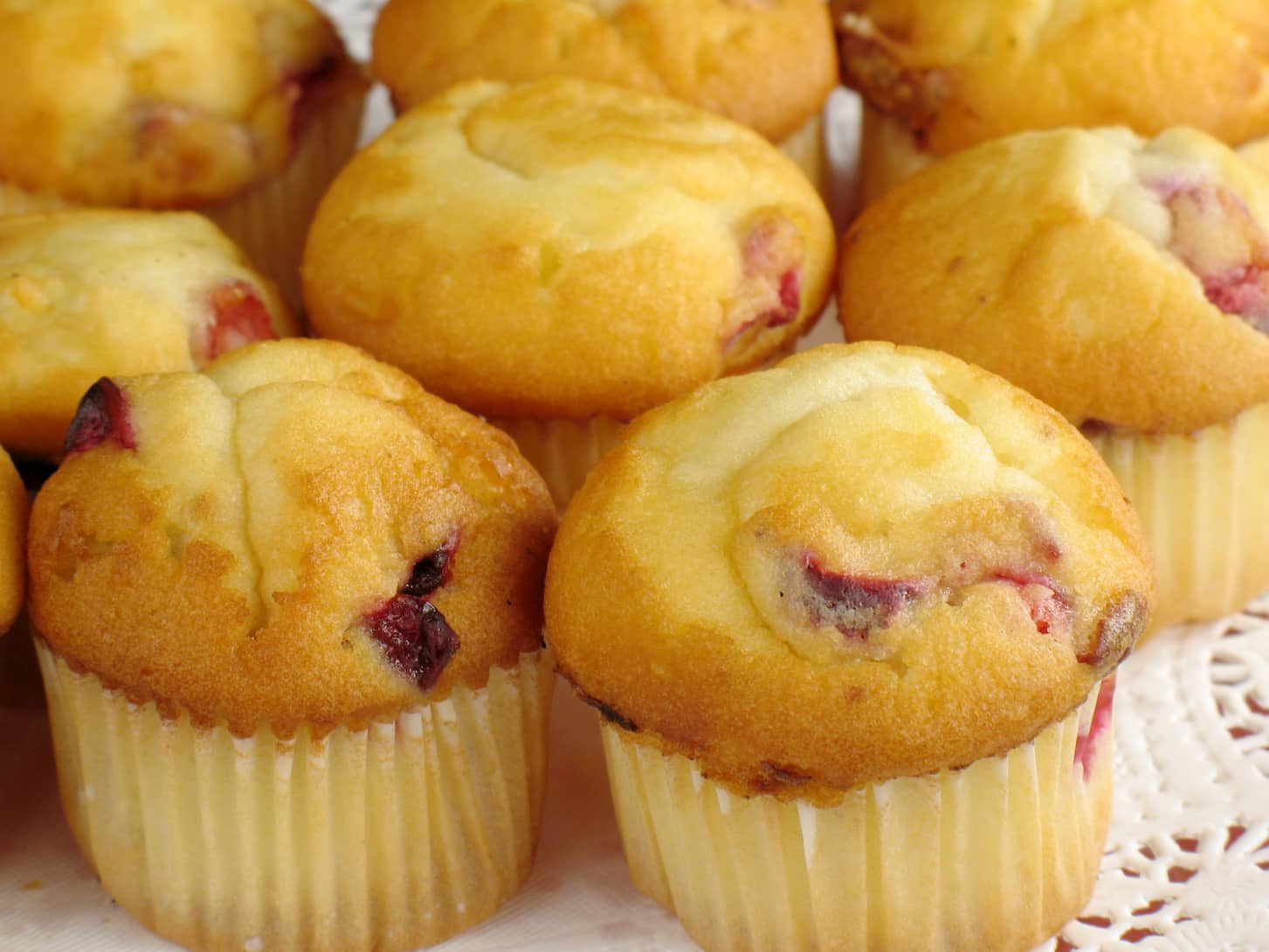Tips for feeding hungry tummies
Tip #1: Have meals and snacks at set times
Tip #1: Have meals and snacks at set times
Tip #2: Include healthy snacks in your meal plans
Tip #2: Include healthy snacks in your meal plans
Tip #3: Eat together
Tip #3: Eat together
Tip #4: Drink up
Tip #4: Drink up
Tip #5: Have some milk
Tip #5: Have some milk
Getting the kids involved
Hands up if your wee one will only eat 3 things? Getting the kids involved in planning and preparing meals is a great way to get them more interested trying new foods. If they’ve helped cook it, they’re far more likely to eat it!
You can find more tips on our pages about fussy eating.
Some simple meal ideas
Use our recipe finder to look for dishes that use the ingredients you have in your kitchen. The Greener Scotland website also has a useful recipe finder.
Here are some of our favourite Parent Club recipes:
Top ‘fakeaway’ recipes

Photo of chicken nuggets
If the kids are crying out for a takeaway, why not try one of these healthier alternatives? And even better, these are often cheaper than getting a takeaway!
Vitamin D
Vitamin D has a number of important functions and is needed to support bone and muscle health. Vitamin D is made by our skin from sunlight. It's also found in small amounts in some foods, but it's difficult to meet recommended intakes of vitamin D from diet alone. In Scotland, we only get enough of the right kind of sunlight for our bodies to make vitamin D during the summer months.
Normally, 10–15 minutes of unprotected Scottish sun exposure is safe for all. Once sunscreen is correctly applied, vitamin D synthesis is blocked. Staying in the sun for prolonged periods without the protection of sunscreen increases the risk of skin cancer.
Since it can be difficult to get enough vitamin D from diet alone, everyone (including children) should consider taking a daily supplement containing 10 micrograms of vitamin D. You can usually find this in your local supermarket or chemist.
If you’re at higher risk of vitamin D deficiency, it’s particularly important to take a daily supplement. Higher risk groups include:
- all pregnant and breastfeeding women
- children under 5 years old
- people who have low or no exposure to the sun, for example, people who cover their skin for cultural reasons, are housebound, confined indoors for long periods or live in an institution such as a care home
- people from minority ethnic groups with dark skin such as those of African, African-Caribbean and South Asian origin, who require more sun exposure to make as much vitamin D.
If you’re pregnant, you can get Healthy Start vitamins, which contain Vitamin D, for free. Ask your midwife for further information. Women and children up to 3 years old can also get free Vitamin D supplements. Please contact your health visitor for more information.
Children under 5, including breastfed babies, should be given a daily supplement of 8.5 to 10 micrograms of vitamin D all year round, to make sure they get enough. If your baby drinks around a pint of formula milk per day, you don’t need to give them a supplement, as formula already has added vitamin D.
You can find out more about Vitamin D here.
Tips for making healthy choices
If you're aiming to make more healthy choices when you're shopping or cooking, the Eat Well, Your Way website from Food Standards Scotland has lots of helpful tips.




